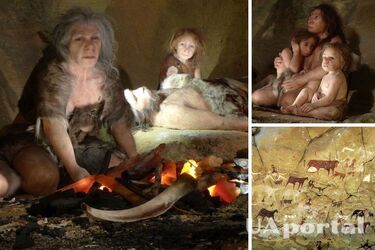Trying to survive the cold: why ancient people could hibernate

Archaeologists who studied the remains of people who lived on Earth half a million years ago found that they showed signs of diseases associated with a lack of vitamin D.
According to archaeologists, this indicates that hominids spent a lot of time without light and hibernated during periods of particularly severe cold, L'Antropologie writes.
Scientists from the Democritus University of Thrace in Greece found approximately 7,500 bones belonging to at least 29 people of the species Homo heidelbergensis (Heidelberg man) in the caves of Sima de los Huesos in Spain, who lived about half a million years ago and were the ancestors of Neanderthals.
Read also: Ancient people made drinking bowls out of human skulls - research by scientists
Analysis of the fossils and DNA fragments which are left in them showed that hominids had renal osteodystrophy, rickets, and other diseases associated with a lack of vitamin D and not typical for the ancient people. However, biologists often find them in animals that regularly hibernate.
The authors of the study, Antonis Barziokas and Juan Luis Arsuaga, believe that Homo heidelbergensis went into caves to spend the winter and spent a long time without sunlight, hibernating.
The researchers believe that Homo heidelbergensis survived one of the harshest ice ages in the last million years. This may have forced the hominids to adapt to the new conditions, and for the next 50 thousand years they hibernated every winter.
The authors of the study believe that their approach will help determine the life cycle and physiology of extinct human species. They are ready to consider alternative hypotheses in this regard.
As a reminder, scientists have managed to decipher 3500-year-old mysterious hieroglyphs.
If you want to get the latest news about the war and events in Ukraine, subscribe to our Telegram channel!
